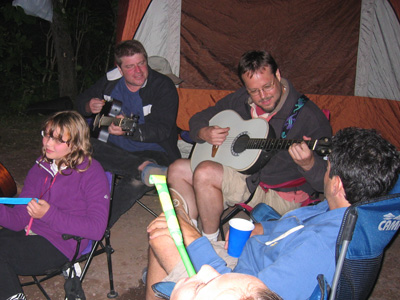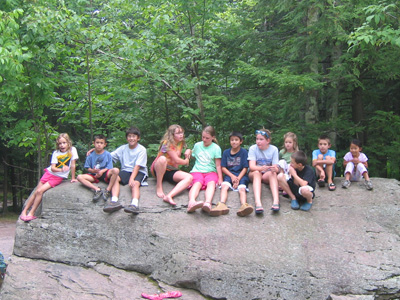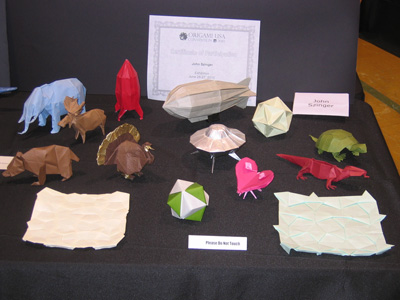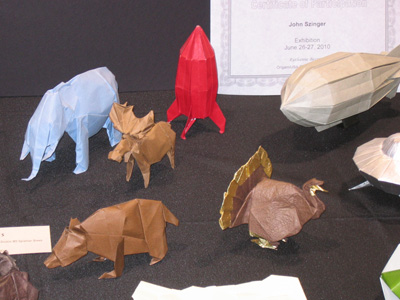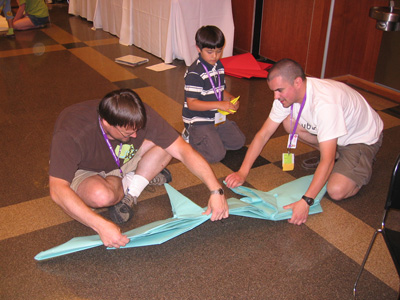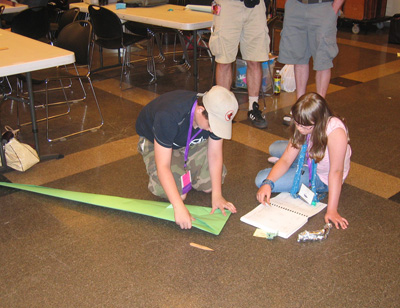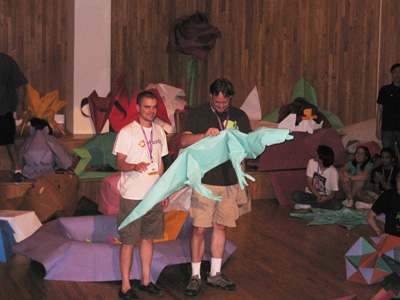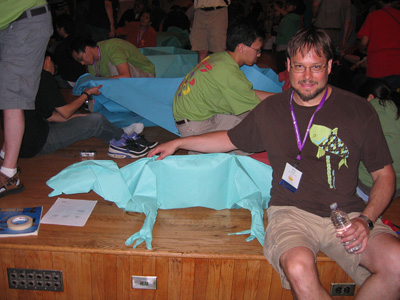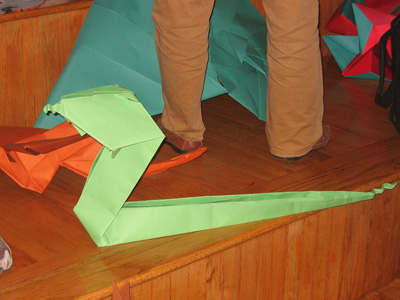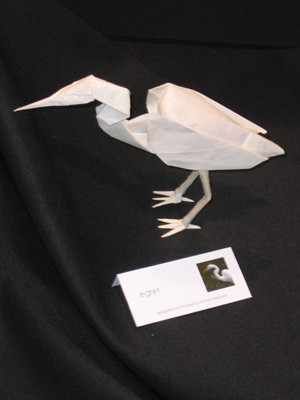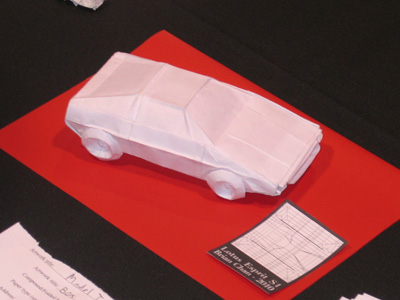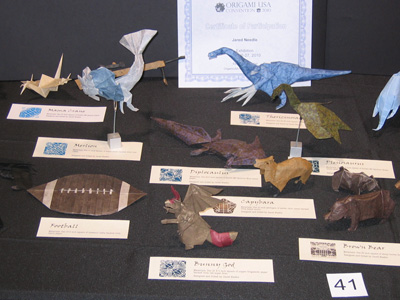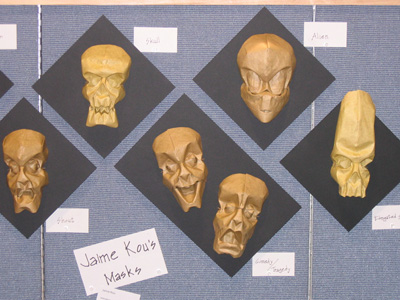On the heels of my trip to California my former employer is making news, back from the dead after ten years as an undead patent troll, a Patent Lich, if you will.
Way back in the 90’s I worked at the secretive, futuristic think tank Interval Research, owned by the reclusive “accidental billionaire” Paul Allen. It was a very cool place to work, brimming with cutting edge technology and great, creative people and their ideas. Their self-declared mission was to become the next Xerox PARC and the place was loaded with the best and brightest from the aforementioned PARC as well as the MIT Media Lab, the Interactive Telecommunications Program at NYU, and of course Stanford and lots of other places. Douglas Coupland described it in Microserfs as “the coolest place in Silicon Valley.” To me it was kind of like getting a PhD, but earning a real salary instead of accumulating academic accolades. Lots of real good interdisciplinary collaboration with lots of interesting, smart people.
However, the lab has a fatal flaw: hubris. Not satisfied with merely doing cutting edge R&D, their goal was to create startups and change the world and profit wildly, to spawn the next Apple or whatever. I was invited to join the research staff partially on the strength of the work I had done at NYU/ITP, using a programming language called Body Electric to build virtual worlds. This software morphed into a thing called Bounce under the guidance of my friend and mentor Levitt, and made its way to Interval, where it collided with a project from MIT called MediaCalc to create something new and really pretty amazing, particularly for the time, when digital video on a computer barely worked at all, even for the most specialized, high-end rig you could build. Both Bounce and MediaCalc used the idea of a graphical dataflow programming interface to create multimedia applications. Bounce was focused on realtime control and simulation environments that included animation and music. MediaCalc was more focused on generating data streams of metadata from audio and video input and recombining them for new, novel outputs.
At one point I was asked by the Biz Dev group what I thought the commercial applications of our work might be. The Biz Dev people were somewhat removed from the R&D group and the cultural divide was one of the lab’s big flaws. To me the answer was obvious: create a commercial tool for new media artists. Bear in mind that at this time Director and Premiere were still pretty new, as well as their now-defunct competitor MTropoils. Flash hadn’t been invented yet. Pixar was known only to a handful of geeks for being the company that made Renderman, an app that let you farm out our your rendering to a network of SGI’s if you were lucky enough to have that kind of thing. A lot of people there were academics, and were not interested in running a startup anyway. I’d worked at a few small companies before and to me the idea that you start with one core strength and build from there seemed natural. However, I was told that making authoring tools “isn’t a Paul Allen sized idea.” Apparently they wanted to go straight from zero to Toy Story which, needless to say, turned out to be unrealistic.
Meanwhile the world wide web happened, and as the dotcom bubble came to its busting point the lab seemed a little out of sorts. While we were making big investments in deep technology that would come to fruition in the future, the world changed around us. For example, one project got killed when Apple and Sony adopted FireWire rather than our data bus. By 1999 it seemed like anyone with a half-baked business plan could cruise up Sand Hill Road and get a zillion dollars for their startup without any particular technology or protectable IP. Remember pets.com? Interval continued to pursue R&D and indeed filed many patent applications, but never succeeded in launching a killer startup. My guess is that the top twenty coolest things from the lab will never see the light of day and will remain known only to a handful of insiders. One example: there was a guy there named Tom Etters who was working on a complex-plane Boolean logic for quantum computers called Link Theory, based the premise of the square root of not.
By early 2000 Microsoft was on trial for criminal practices with regard to numerous antitrust laws (basically they illegally strangled and killed Netscape), and the day the verdict came down (guilty, but just a slap on the wrist) Paul lost over a billion dollars (on paper anyway) due to the tumble in the price of Microsoft stock. This, in my mind, was the trigger that started the whole dotcom collapse and shawnuff in the next few months everything fell apart. Paul, always wanting to be ahead of the curve, wasted no time and immediately shut down Interval and about a half a dozen other companies of his. The ghost of Interval was subsequently reanimated to “maintain and exploit” its patent portfolio.
Last Friday Interval announced it was suing Google, Apple, and basically all of Silicon Valley for patent infringement. I haven’t read the patents yet, but it sounds from the press release that some of it may be based on my work. How funny. I understand the law of the land may well be on their side, and it’s unlikely that they’d have launched the suit if they didn’t have the patents to back it up, but I still think it’s kind of a dick move. Interval had a more then a decade to develop technologies and businesses based on their prototypes, but they didn’t, so now, years later, they’re crying someone stole their ideas.
Interval joins Viacom on the list of companies I work or have worked for that are suing Google. Unlike Interval, I feel the Viacom’s case is much more in the right philosophically, even if Viacom is the most ironic of champions to the cause. For some reason, Google has gotten away with legitimizing piracy of music, video, etc., where others have been smacked down. The project I was working on my last year at Interval relied heavily on media content sharing and was effectively killed by the Napster decision. Now Viacom is clearly an 800 pound monopolistic media conglomerate here, but at stake really is the ability of anyone working as an artist to get paid for their work in the future world of mainstream media. So the world is changing again. It’ll be interesting to see how it all plays out.






